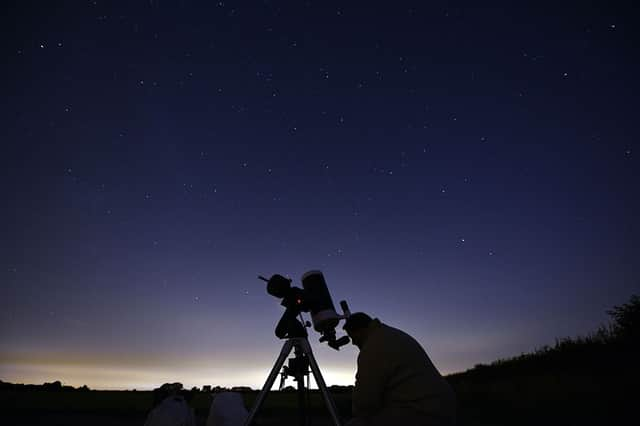Leonids meteor shower 2021: how to see shooting stars in the UK - and when is the peak?


Skygazers may catch a glimpse of a shooting star display as the annual Leonid meteor shower lights up the skies above Britain.
The night-time spectacular could be visible in the early pre-dawn hours of Wednesday (17 November) morning, weather permitting.
Here is everything you need to know about it.
What are the Leonids?
Advertisement
Hide AdAdvertisement
Hide AdThe Leonids, usually fast, bright meteors, are associated with Comet Tempel-Tuttle.
The point where they appear to stream from is at the head of the constellation Leo the Lion, hence the name.
A tiny path of debris is left by the comet as it follows its path around the sun, and this enters Earth’s atmosphere at speeds of up to 70 kilometres per second, vaporising and causing the streaks of light we call meteors.
When does the Leonid meteor shower peak?
The Leonid meteor shower will peak on the night between 16 and 17 November.
Advertisement
Hide AdAdvertisement
Hide AdThis year the best time to see the spectacular will be pre-dawn in the early hours of Wednesday (17 November) morning.
Those who miss the peak on Wednesday night might still be able to view the shower, as it continues at a reduced rate for several days on either side.
How can I see a meteor?
The meteors can be seen with the naked eye, and are best viewed with clear skies away from light pollution.
Dr John Mason, from the British Astronomical Association, said: “If you are in the countryside you may see a few meteors. If it is the town or city, you may not see any at all.”
Advertisement
Hide AdAdvertisement
Hide AdIf you’re able to venture out into your garden to spot the show, wrapping up in warm clothes is recommended, and you should allow up to 20 minutes for your eyes to fully adjust to the night sky.
Unfortunately, the waxing gibbous moon (it will be full on 19 November) may also be providing its own share of light pollution into the night sky.
Displays are better when the Tempel-Tuttle comet, which takes 33 years to orbit the sun, is closer to the Earth, an occurrence which is next due in about 15 years’ time.
Weather plays a big part, and with November skies often clouded over, spotting the meteors might be easier said than done.
Advertisement
Hide AdAdvertisement
Hide AdThe Met Office forecast for Wednesday to Friday is for changeable weather in the north with spells of rain or showers and often windy.
It says it will be largely dry in the south with variable cloud.
A version of this article originally appeared on our sister title, NationalWorld